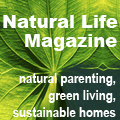Sore Nipples: Causes and Treatments
By Wendy Wisner

Poor latching and positioning are one cause of nipple pain. |
One of the biggest fears new moms have about breastfeeding is that it’s going to hurt. Stories abound about mothers who have tried to breastfeed their babies, but who stopped because the nipple pain was too great. The good news is that with the proper education and support, most bouts of nipple pain can be solved pretty easily—the key is to get good help, and get it promptly.
Breastfeeding is normally not supposed to hurt, and for many mothers, it never does. In the first few days of breastfeeding—as mom and baby are figuring it out, getting to know each other, and finding the best ways for their bodies to fit together—some mothers feel a small amount of tenderness. If the tenderness passes after a day or two, and if the nipple skin is intact, then there is nothing to be concerned about. But serious pain—pain that continues past the first days, makes you hold your breath, curl your toes, or scared to put your baby to your breast—is not within the scope of normal.
If you are experiencing such pain, you should get professional help right away, from a volunteer breastfeeding counselor or a Board Certified Lactation Consultant. Untreated nipple pain often only gets worse—problems should be addressed right away so that nursing is the comfortable experience it’s meant to be.
If you are experiencing sore nipples, it is important to get in-person help, and not to try to solve it yourself or go to the internet for solutions. As a lactation consultant and volunteer breastfeeding counselor, I have taken hundreds of phone calls from mothers, many of whom complain of nipple pain. I have learned over the years—by making some mistakes early on—that it is nearly impossible to properly diagnose and treat nipple pain without actually seeing the mom and baby I am helping.
Nipple pain can be caused by a variety of factors, and often more than one factor at once. Most of these factors can only be diagnosed by thoroughly examining the mom and baby, and observing a breastfeeding session.
All that being said, I think it is vital that we are all educated about breastfeeding and how our bodies work! And most of the causes of nipple pain are simple enough that a simple change or intervention can make all the difference. So I will give you a list of common causes of nipple pain and some simple ways to treat them.
Again, I advise you to work with a breastfeeding professional as you sort this all out, but here is a good place to start.
Latch and Positioning
Poor latching and positioning are probably the single most common cause of nipple pain. Whatever position you use, your baby should be held tummy-to-tummy with you to get a snug, secure latch. It is important that your baby takes in a large portion of breast tissue. Babies who only suck on the end of your nipple can cause a lot of pain! Often a simple change in position makes all the difference for moms who are in pain.
If the nipple skin is broken, you will want to heal it. Treatment options include nipple ointments (Lanolin is popular), oils (olive oil or coconut oil are commonly used), or salt water soaks for the nipples. It is important to prevent scabbing. Usually time and a deep latch will heal the skin as well.
Tongue Tie or Lip Tie
All of us are born with a tiny piece of tissue under our tongues and under our upper lips called a frenulum. In some babies, this piece of tissue is so tight that the tongue can’t move properly to cup the breast, or the lip can’t flange properly to enclose the breast. When the tongue and lip are tight, many mother notice nipple pain, compressed nipples, and babies who slip easily off the breast. The answer to these issues is usually a frenotomy, a simple, quick procedure where the baby’s frenulum is clipped. It sounds scary to many new mothers, but it is a faster and less painful procedure than (for example) a circumcision, and most mothers notice relief soon afterwards. It is best to get this done early on: if the frenotomy is performed later, it sometimes takes longer for the pain relief to come. It is also important to follow-up with your breastfeeding helper after the procedure, as many practitioners recommend follow-up exercises post-frenotomy.
Thrush
It used to be that all unexplained nipple pain was blamed on thrush, but we are learning that nipple pain is more likely to be caused by other factors. Still, thrush does happen sometimes. Thrush is essentially a yeast infection on the breast. Symptoms include a red, “angry-looking” nipples, intense pain, and itching. Babies may have white patches on their mouths or tongues. In-person diagnosis is important here, and mother and baby should be treated together. Treatment options include gentian violet and antifungal creams (available over the counter and by prescription). Often, dietary changes are recommended for mothers, as well as sterilization of anything that comes into contact with the mom and baby.
Bacterial Infection
When the nipple skin is broken, but doesn’t respond to the normal healing treatments like nipple creams and salt water soaks, an investigation of a bacterial infection is warranted. The most common bacterium to infect the nipple is Staphylococcus aureus (“staph”), and usually is treated with prescription ointments. You will need to go to your midwife or doctor for a diagnosis and prescription. For milder infections, over-the-counter antibacterial ointments like Bacitracin may help.
Blebs
Blebs are tiny, pimple-like, white spots on the base of the nipple, and can cause lots of pain! They usually go together with plugged ducts, and often cover a portion of the nipple so that it is hard for the milk to get out of the breast. Basically, the bleb needs to be opened so that the milk can flow and the skin can heal. This can be done in one of several ways, but must be done carefully, and care must be taken to prevent infection. Some blebs open up just from vigorous sucking from babies. After the bleb opens, use creams and other treatment to heal the skin.
Vasospasms
If your nipple turns white at the end of a nursing session along with a burning feeling of pain, you might be suffering from vasospasms of the nipple. This blanching can also be caused by poor positioning or tongue tie. Treatment options include warm compresses and, in extreme cases, Nifedipine, a medication prescribed by a doctor.
Torticollis or Tight Muscles in Baby
Some babies are born with tight neck and jaw muscles. Often, the tightness is related to how they were positioned in the womb, or birth complications such as long pushing phases, unusual birth positions, or forceps/vacuum delivery. Babies with tight muscles tend to clamp down on the breast, or favor one breast over the other because they feel more comfortable lying in a certain direction. The treatment for this is creative positioning at the breast (i.e., trying lots of different positions until you find one that is comfy for both mom and baby), and Craniosacral Therapy (CST). Some of these issues resolve on their own with time.
These are the most common causes of nipple pain that I see in my IBCLC practice, but this is by no means an exhaustive list. Sometimes your pain can be caused by more than one of these at once!Remember to ask for help, and not give up hope. There is almost always a solution, and most bouts of nipple pain resolve within the first few weeks of breastfeeding, no matter how you address them.
Happy nursing!
Wendy Wisner is a writer, board certified lactation consultant (IBCLC), and mother. She is the author of two books of poetry, and her poems, book reviews, and articles have appeared widely. Visit her website.
|
|







